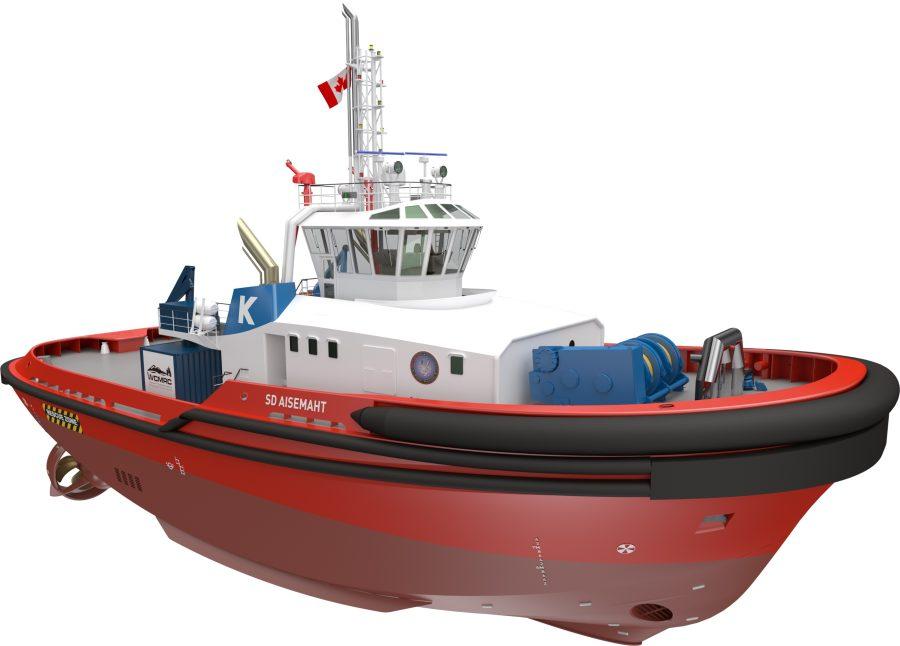British Columbia’s Salish Sea region is engaged in a balancing act: opening up trade, but with its tanker exports routing through the intricate connecting waters of the Straits of Georgia and Juan de Fuca. The surrounding First Nation communities are understandably concerned about how this is to be managed.
As a result, methanol is a useful fuel for Kotug’s new Canada contract: if there’s a spill, it dissolves quickly in water with minimal impact on marine life. “However, while methanol is now fuelling merchant ships of 200m or 300m in length, it’s still very new for smaller vessels of this size,” Lawren Best, part of Robert Allan Limited’s (RAL’s) naval architecture team, tells Ship & Boat International – adding that the tight envelope heightens the design challenges of the RAsalvor 4400-DFM tugs it has drawn up for Kotug, and which are under build at Sanmar Shipyards.
“Unlike diesel, methanol is a low flash liquid, so you have a lot of IGF code requirements: you have to cofferdam methanol from pretty much everything,” Best says. “You cannot have it directly against your main machinery spaces, accommodation or fuel/fresh water tanks – and these cofferdams are required to be 600mm-wide. Ventilation, hazardous zones…all of those elements impact the location of the methanol tanks and the configuration of the vessel.”
The escort route for the tankers (some Aframax-sized) runs some 170nm from Vancouver through the Salish Sea, all the way to the Pacific Ocean. “The tugs’ role is to follow each and every tanker out until they’re fully clear of the coastline,” says Best. “Therefore, the weather conditions and performance at sea are significant factors.”
Starting with the hull, these tugs buck the trend for the short, wide forms that are currently popular. Best explains: “We’ve moved somewhat in the other direction: the entry is gentler than most, and we’ve lengthened the proportions along with the waterline to 44m, all of which assists seakeeping. The other element is a requirement for over 400m3 of recovered oil capacity.” In fact, these vessels will have the largest spill response capabilities of any tugs on the BC coast.
It was decided to install the two methanol tanks forward in the hull, putting the recovered oil aft and the fuel prep areas between them. While further details are currently under wraps, Best confirms that the fuel tanks will be sufficient for multiple 30-hour voyages. The hefty 7MW of installed power is divided between two medium-speed engines that can operate in dual-fuel mode, using diesel as a pilot fuel to prompt methanol combustion, though they can run in pure-diesel mode if required.
While the engines are directly coupled to the Schottel Z-drives, a mechanical cross-link allows one engine to drive both propulsors. “This system lets us optimise the loading on a single engine rather than having two engines run at low load, which wouldn’t be efficient or necessarily use a high percentage of methanol in combustion,” Best explains. “That means we can increase efficiency and the methanol substitution rate.” Combined with using shaft generators on the main engines to power house loads, this also reduces the engines’ running hours and underwater radiated noise, helping to mitigate the effects of shipping on the local killer whale population.
The interior features en suite crew cabins and extra berths for use by Western Canada Marine Response Corporation (WCMRC) spill response technicians. The tugs are also equipped with firefighting kit to the requirements of ABS’ FFV 1 notation.






